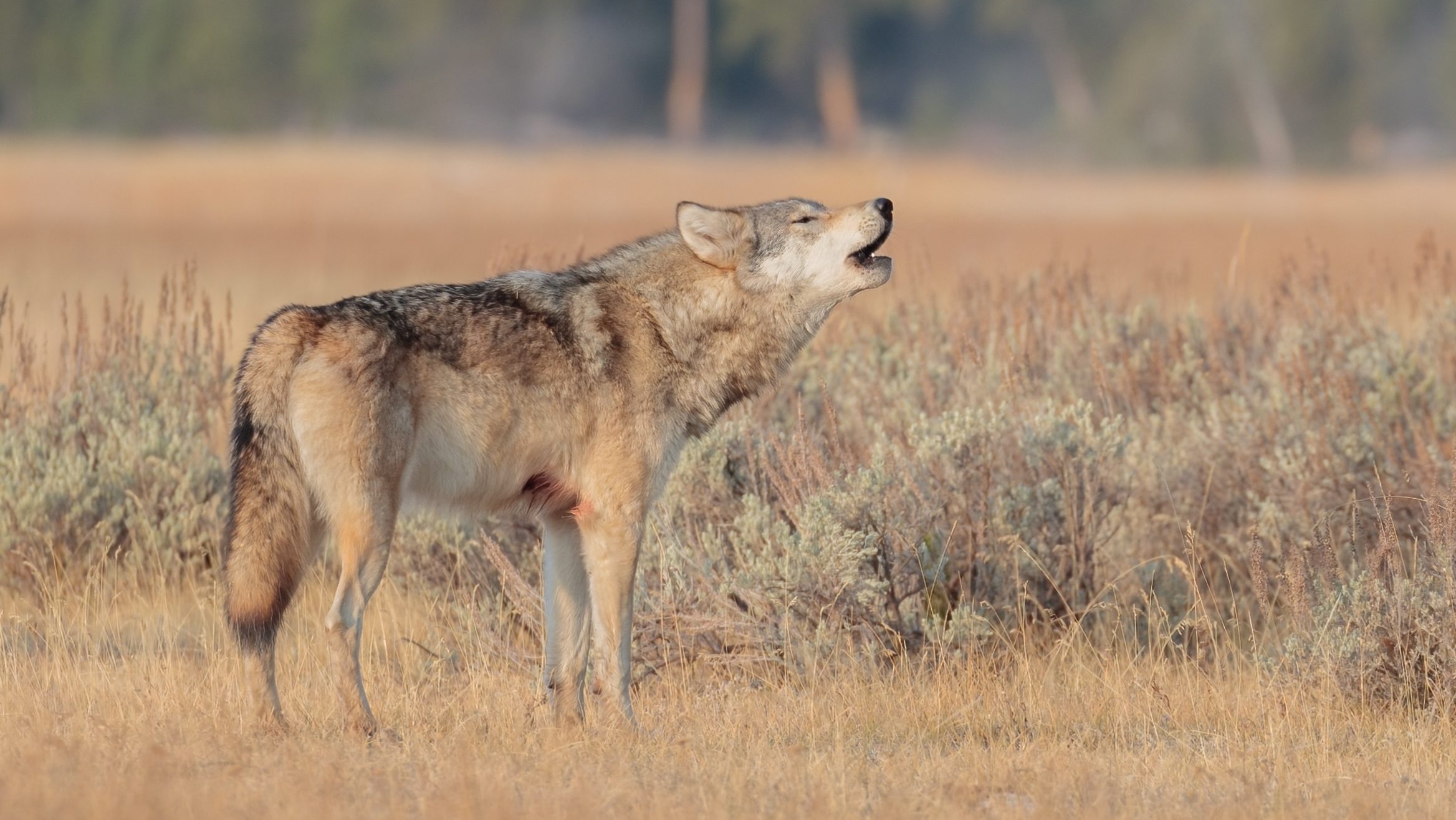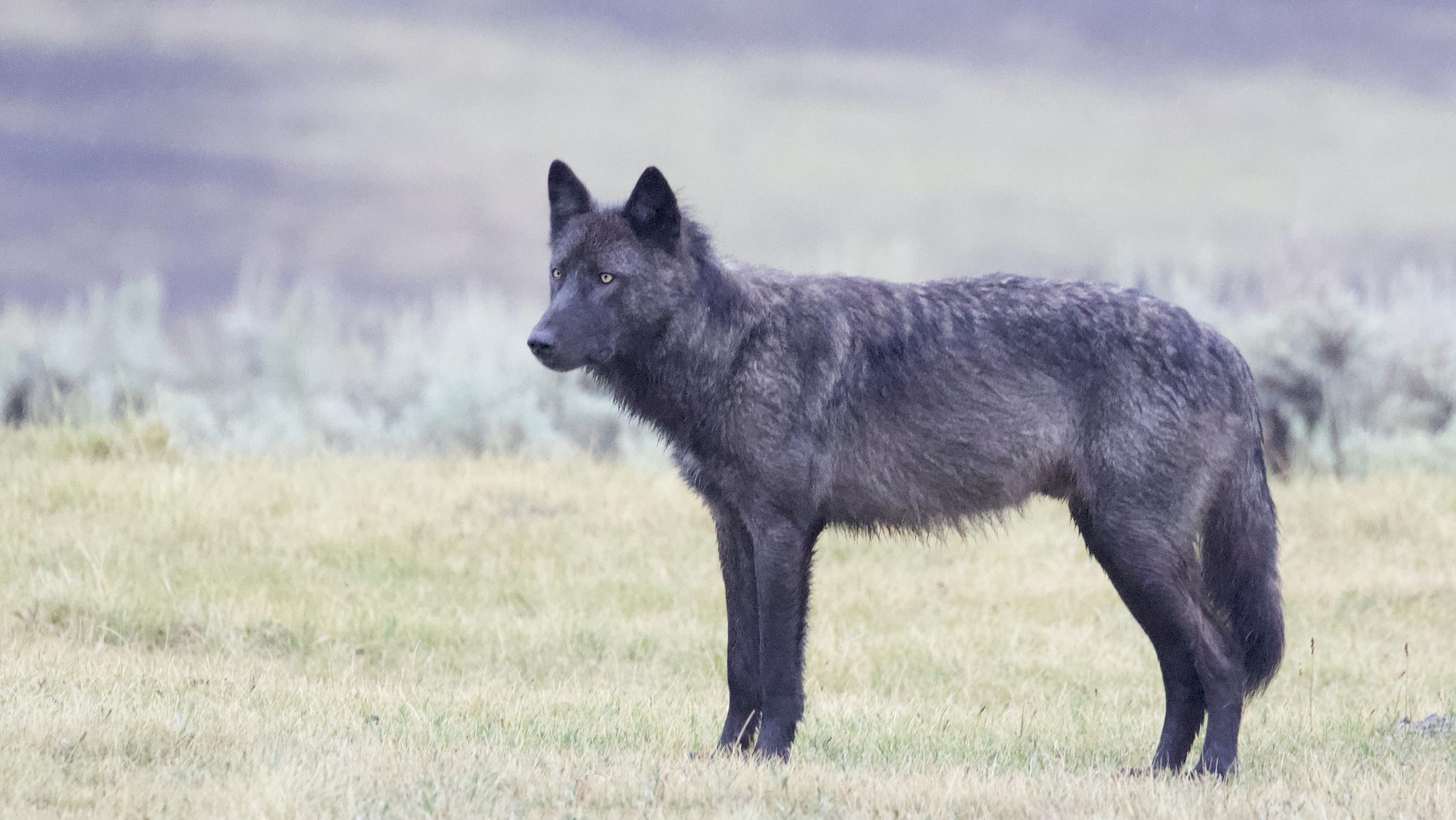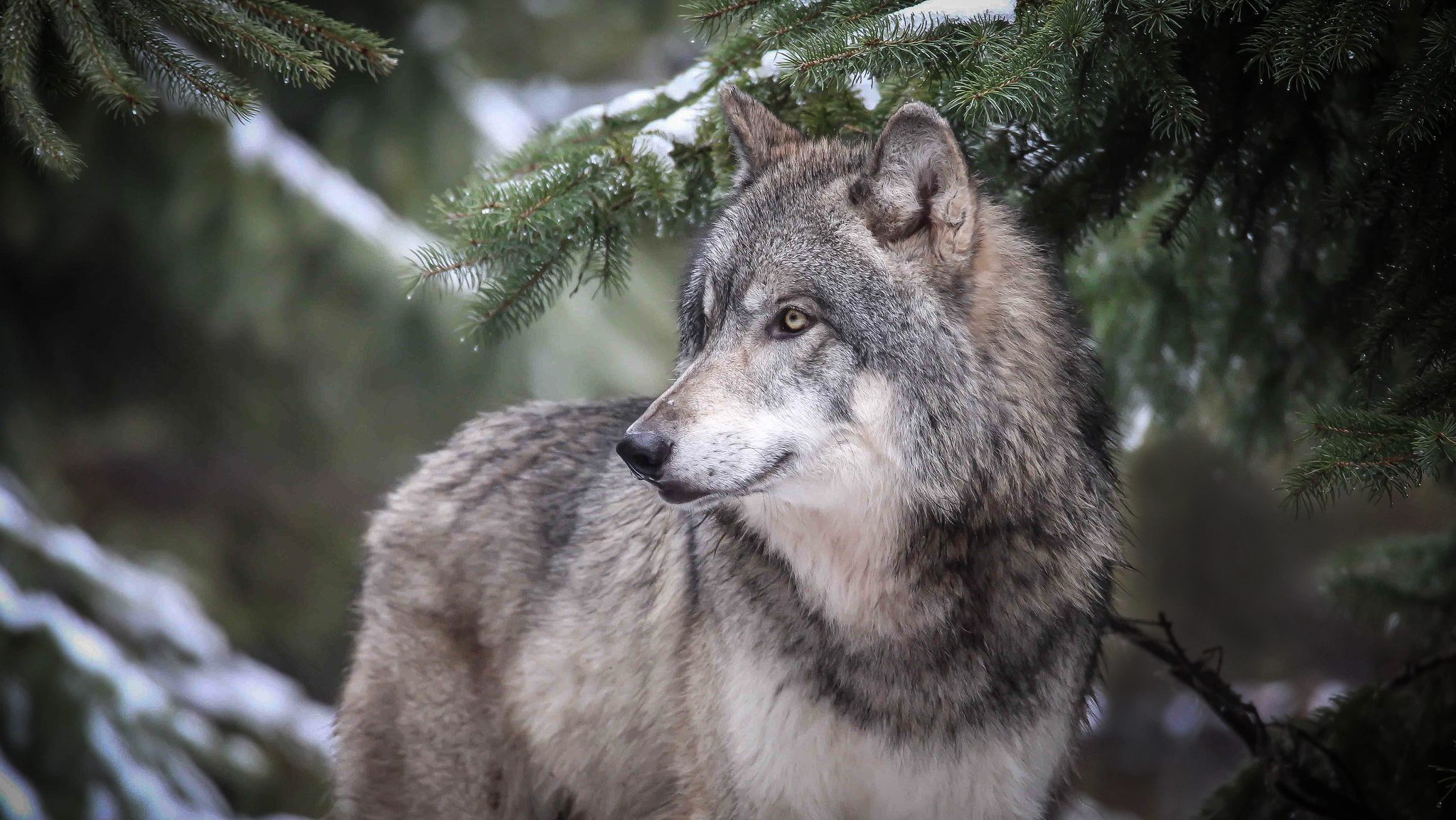Sometime in the last 10,000 years or so, as humans migrated across the Bering Strait to North America, they brought dogs with a gene that ultimately gave gray wolves black coats.
Thousands of years later, conquistadors landing in South America brought measles, dogs and a virus that causes distemper.
Fast forward to today—but a blink in evolutionary time—and researchers realized those two events likely collided and resulted in more black-colored wolves in the southern Rocky Mountains and more gray-coated wolves everywhere else.
“We found that there are more black wolves where distemper outbreaks are more frequent,” says Ellen Brandell, one of the paper’s co-authors and a wildlife research scientist with Colorado Parks and Wildlife. “We also found that adults that survived distemper are more likely to be black.”
Why? Hitching a ride on the gene that codes for black coats is an increased immunity to respiratory viruses like distemper.
A paper explaining the phenomenon was published in the journal Science in late 2022 with more than a dozen co-authors from universities across France, the U.K. and the U.S. and several state and federal agencies. The research continues to show just how much each new variation, each new introduction, can create rippling effects in species for thousands of years.

The Color of a Coat
Outside of the Arctic, gray wolves, despite their name, have two main coat colors: gray and black.
Wolves outside of the southern Rocky Mountains—those in the Great Lakes region and northern Rocky Mountains and Alaska—tend to be predominantly gray. Those in the more southerly regions of the Rockies, around Banff, Jasper and Yellowstone national parks tend to be split about half and half.
Explaining how coat colors come to be is similar to why some people have green eyes versus brown or blond versus brown hair, says Doug Smith, one of the paper’s co-authors and a recently retired senior biologist at Yellowstone.
Wolves get two genes that dictate coat color, one from each parent. That means they either have two black genes, also called alleles, two gray genes, or one of each. For those who have one of each, the black allele is dominant and the wolf, as a result, is black.
Black wolves, logic would follow, should then be dominant across the landscape, since two of the three combinations of genes result in black wolves.
But, broadly speaking, most wolves outside of the more southern ranges of the Rockies are gray.
Researchers realized that gray wolves—those with two gray alleles—are more likely to successfully reproduce. Why is up to speculation, though after decades of studying wolves in the Yellowstone region, Smith hypothesizes it’s because gray wolves have a tendency to be more aggressive and thus more successful surviving wolf conflict, finding a mate, and producing pups.
Wolves with two black genes, conversely, are the least likely to survive for reasons that still puzzle researchers.
But if wolves with two gray genes are most likely to reproduce, why, in places like Yellowstone, are there about as many black wolves as gray wolves? Because of disease and mate choice, researchers found.

A Deadly Virus
Canine distemper is a highly contagious virus similar to measles that likely arrived in South America with conquistadores in the 1700s, according to a 2019 paper published in the journal Frontiers in Microbiology.
From there, the disease spread throughout canines including foxes, raccoons, skunks, coyotes, wolves and even wild cats like lions and tigers. It’s a brutal disease, Smith says, causing those infected to become lethargic, vomit and cough before moving onto the animal’s nervous system.
It’s often fatal, particularly to puppies, and can wipe out entire litters. Like many viruses, those who survive disease exposure are generally immunized against that strain for life (as well as any vaccinated against the disease, like most of our domesticated furry companions).
Outbreaks of the disease occur throughout North America but are much more frequent, for unknown reasons, in the Yellowstone region where they occur every four or five years.
Perhaps, researchers realized, there was a connection between outbreaks of distemper and the gene that results in varying wolf coat colors.

Disease Affects More Than Populations
After extensive collaboration and analysis from 12 North American wolf populations, researchers realized that the DNA region containing the black gene is linked to increased immune function.
They then turned to 20 years of data from wolves in Yellowstone and realized that more black wolves was not an accident. Because wolves in Yellowstone faced increased numbers of outbreaks of distemper, the canines selected to breed with wolves of the opposite color even if pure gray wolves might have higher reproductive success.
“And so putting all that together, this is probably why you get the color patterns of wolves that you get across North America and in the region,” Smith says. “Disease doesn’t hit every place the same. You had variation of disease across North America. And as it varied, it had a big impact on who survived.”
This is not likely the only surprising variation in genetics helping protect animals from disease. A 2009 paper also published in Science explaining the origins of the black allele from domestication shows it may actually help the species adapt, particularly to a changing climate. And the phenomenon is likely not limited to wolves.
“We don’t tend to consider disease to be as important as it is in shaping the evolutionary processes of populations,” Brandell says. “Here we show that disease pressures can have enormous impacts on what we observe in wildlife like their coloration, something which we can all easily observe.”




How do they explain pure blooded wolves with black coats and no domestic dog DNA then? Melanism wasn’t exclusive to dogs. We’re not going to start saying that black mountain lions (panthers) are part dog, are we?
Most people I tell this to states “I am crazy,” but standing on back porch at dusk Monday evening about 8:15 pm I noticed across the street from me, a black form to which I first thought it was a dog- but after remaining quite and still so I could observe this form better, it had to be a black wolf it was stealthier and the hair was course and it then got spooked by some wild hogs coming up on it, and took off back deeper in the woods. I will argue with anyone that this was a black wolf, and a very awesome animal, a rare sighting and I am so glad I seen it!
Why are black wolves more common in Canada? Why are black wolves rare in the European Wolf if that is where the measles and distemper came from? I also wonder why black wolves are extremely rare in the Iberian Wolf where the Conquistadors originated?